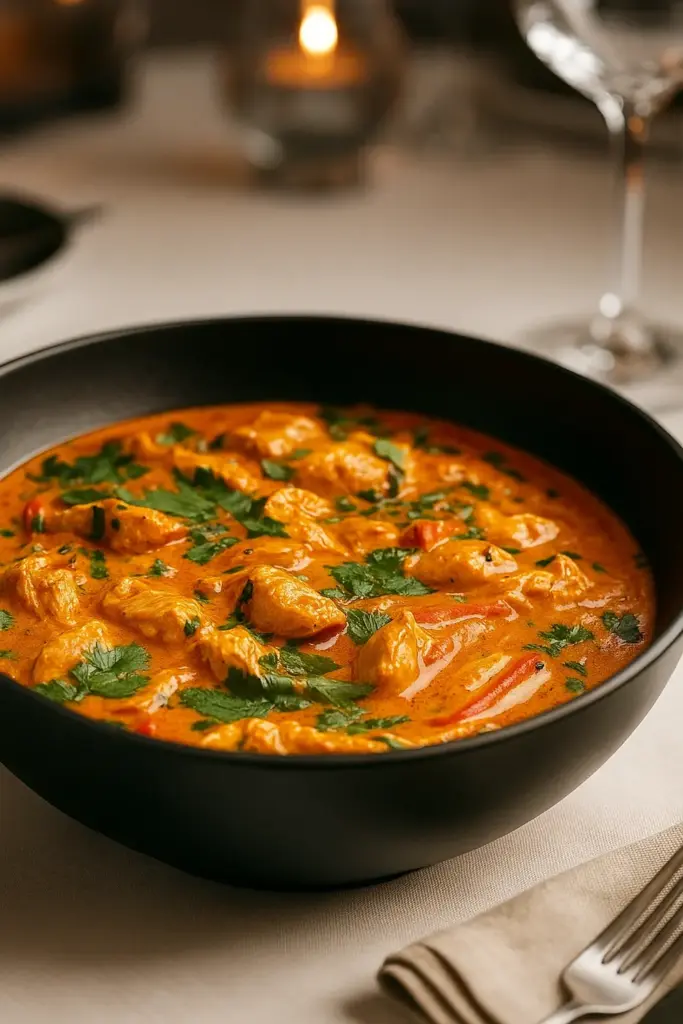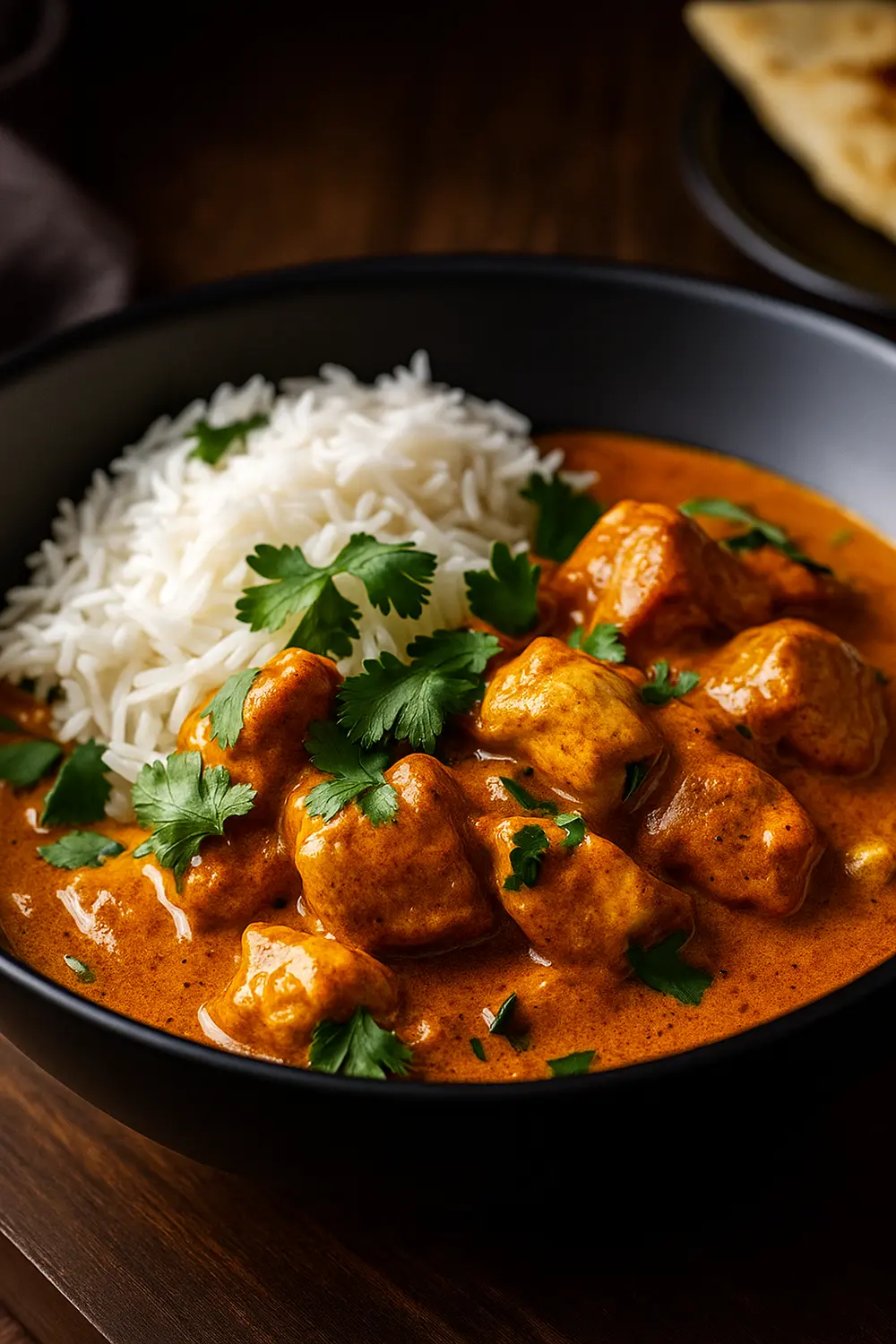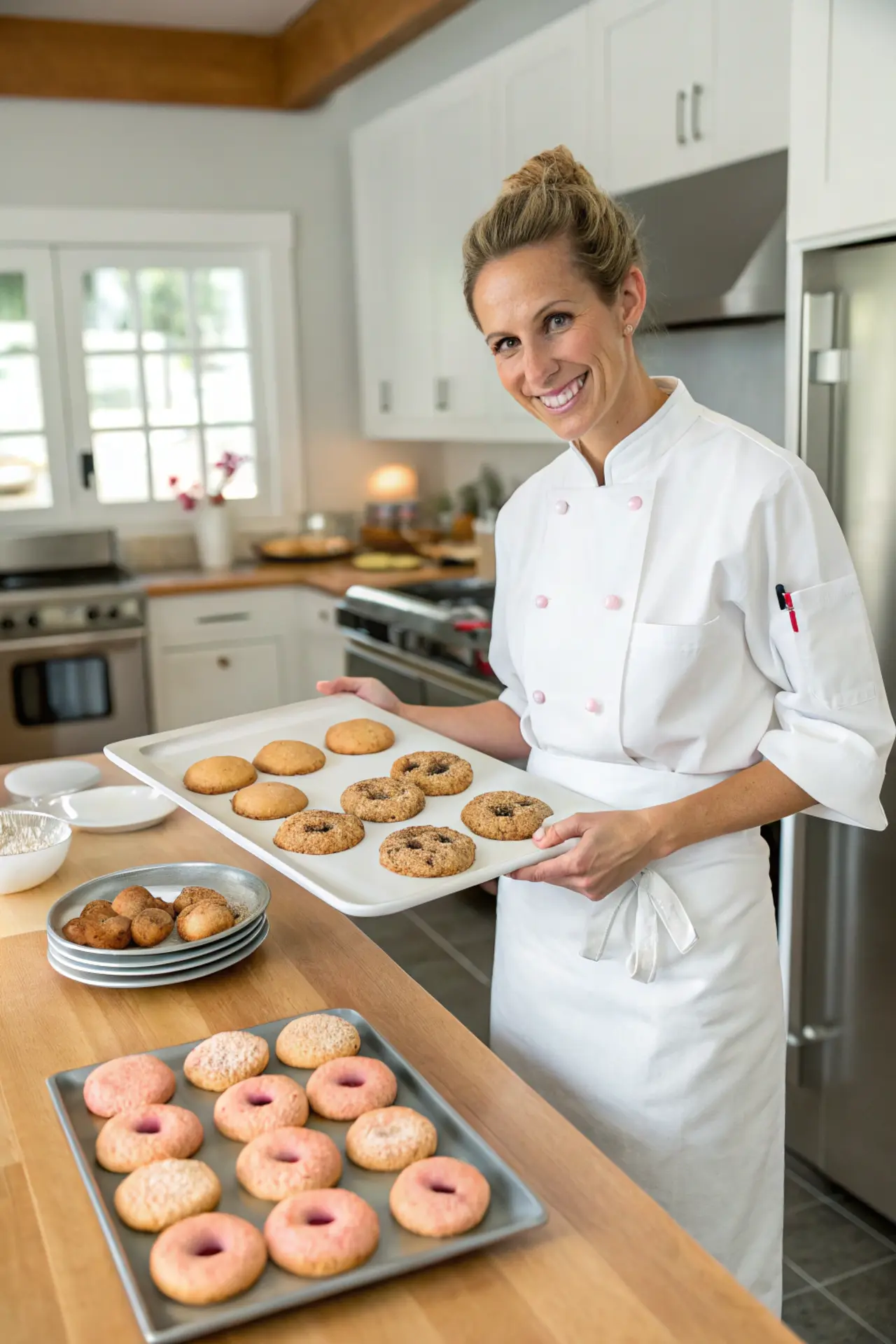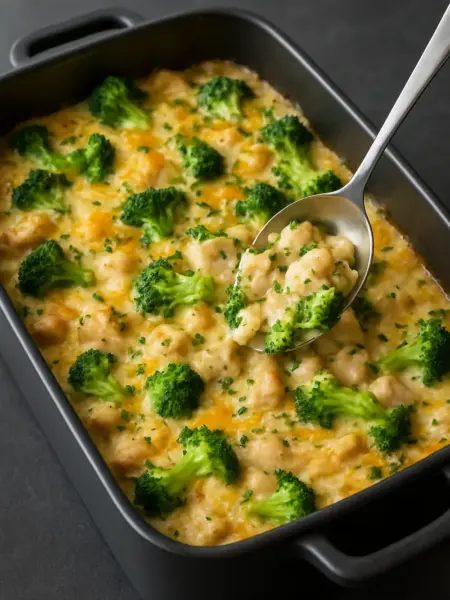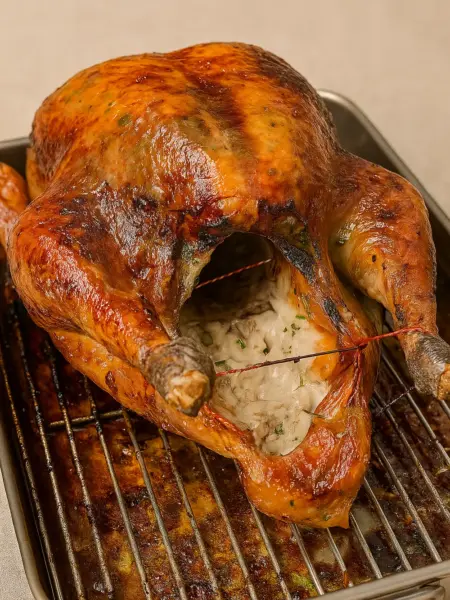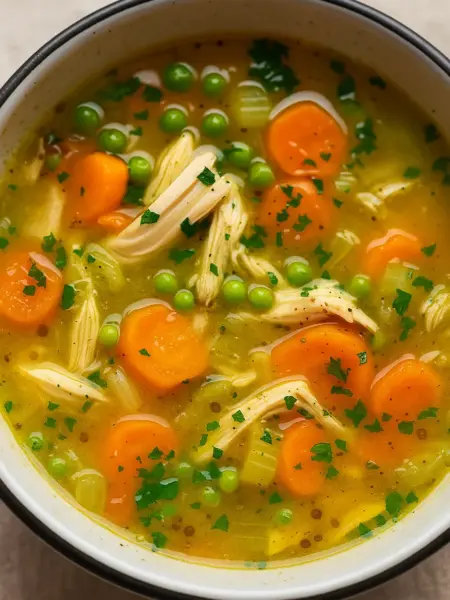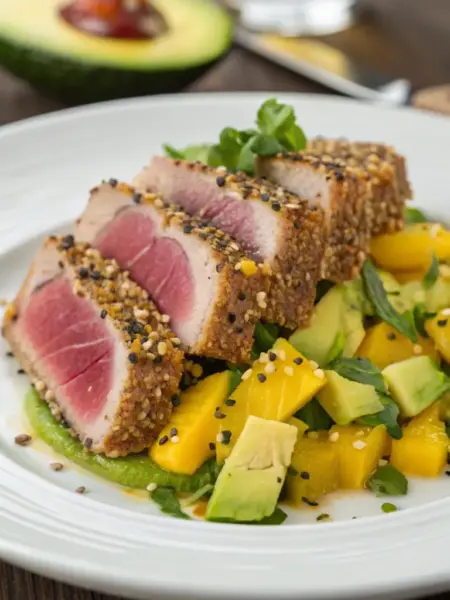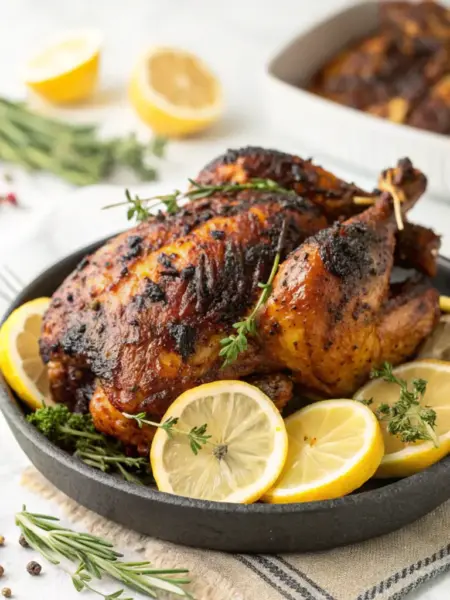This post may contain affiliate links, meaning I may earn a commission if you make a purchase, at no extra cost to you. I only recommend products I trust. Thank you for your support.
Coconut chicken curry is a delicious Indian or Thai dish featuring tender chicken simmered in a rich, creamy sauce made primarily with coconut milk, aromatic spices like curry powder, turmeric, and cumin.
This creamy coconut curry chicken recipe is a delicious fusion of traditional Indian curries and Thai flavors.
It embraces the aromatic depth of Indian dry spices like cumin, coriander, turmeric, and garam masala, which form the backbone of many Indian chicken curry recipes.
Yet, the prominent use of creamy coconut milk and the bright finish of lime juice echo the vibrant, often soupy characteristics of Thai chicken curry.
As a culinary professional, a recipe is viewed not just as a set of instructions but as a blueprint for a complete culinary experience.
This easy coconut chicken curry recipe, while seemingly simple, holds layers of potential and nuance that can be explored to elevate the dish.
Perfect for weeknight dinners, this easy Indian chicken curry dish is high in protein, gluten-free, and packed with incredible flavor that will transport your taste buds.
Want delicious and healthy restaurant-quality meals delivered to your door with FREE shipping? Use my exclusive link below to get started:
Enjoy FREE shipping on orders $99 or more
✅ Read the entire article to ensure you’re fully prepared with all the necessary equipment and ingredients. The full recipe and cooking instructions are below.
Key Ingredients for Your Coconut Chicken Curry
Every great dish starts with quality ingredients, and this coconut chicken curry is no exception. Each component plays a vital role in building the layers of flavor and achieving that perfect creamy texture.
1. Chicken
- Boneless, skinless chicken thighs are highly recommended for this curry.
- Chicken thighs stay juicy and tender even after simmering, and they absorb the rich flavors of the sauce beautifully.
- While chicken breasts can be used for a leaner option, they tend to dry out more easily, so careful cooking is key.
2. Full-Fat Coconut Milk
- This is the absolute cornerstone of a truly creamy and luscious coconut curry.
- Opting for full-fat ensures that rich, velvety texture and deep coconut flavor that lighter versions simply can’t deliver.
3. Aromatics
- Onion, garlic, and ginger form the foundational flavor base of the curry.
- Sautéing them until soft and fragrant releases their natural sweetness and pungent notes, which are essential for a complex curry.
4. Curry Powder & Dry Spices
- The blend of curry powder and dry spices (turmeric, cumin, coriander, paprika, cayenne, and garam masala) is the heart and soul of the curry, providing its distinctive warmth, color, and aromatic depth.
- The act of “blooming” these spices in hot oil is crucial for intensifying their flavor and preventing a raw taste.
5. Tomato Paste
- This concentrated ingredient adds a layer of rich, savory depth and a subtle tang, while also helping to thicken the sauce.
6. Lime Juice
- A squeeze of fresh lime juice at the end is a game-changer.
- Its acidity cuts through the richness of the coconut milk, brightening all the flavors and adding a refreshing zing.
7. Fresh Cilantro
- Used as a garnish, fresh cilantro provides a vibrant, herbaceous finish that contrasts beautifully with the warm spices and creamy sauce.
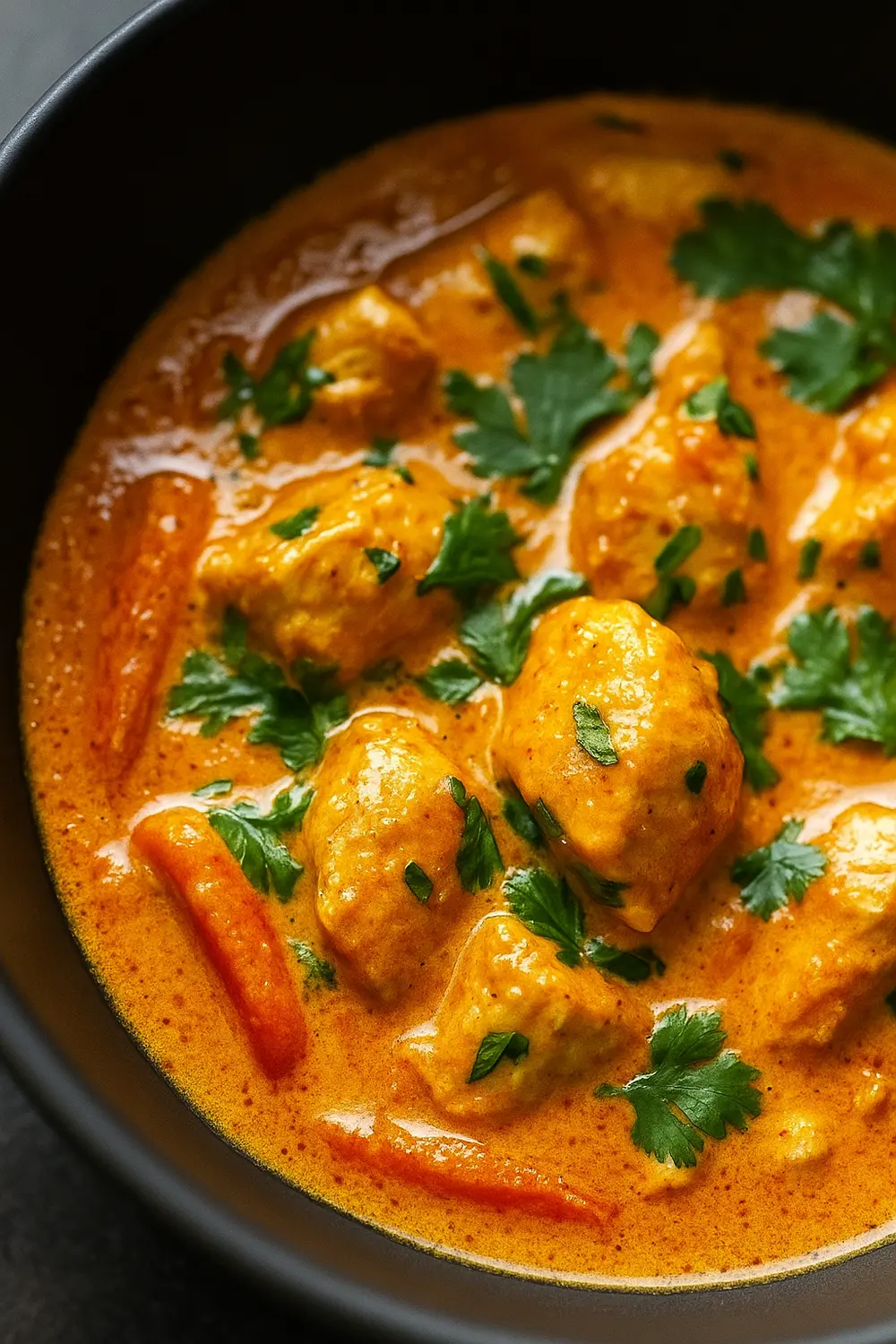
Equipment You Need for Making Coconut Chicken Curry
You don’t need a professional kitchen to whip up this delicious curry. Here are the must-have kitchen gadgets that will make the process smooth and enjoyable:
- Large Skillet or Dutch Oven: A heavy-bottomed pan with a lid is ideal. It provides even heat distribution for sautéing aromatics and spices, and ample space for simmering the curry without overcrowding.
- Cutting Board and Sharp Chef’s Knife: For safely and efficiently dicing onions, mincing garlic and ginger, and cubing the chicken.
- Measuring Cups and Spoons: Accuracy in ingredients, especially spices, ensures a balanced flavor profile.
- Grater or Microplane: Perfect for finely grating fresh ginger, ensuring it melts seamlessly into the sauce.
- Wooden Spoon or Heat-Resistant Spatula: For stirring, scraping the bottom of the pan, and ensuring nothing sticks or burns.
- Ladle: For serving the finished curry into bowls.
Nutritional Benefits of Coconut Chicken Curry
Beyond its incredible taste, this coconut chicken curry offers several nutritional health benefits, making it a wholesome meal choice:
- High in Protein: Chicken is an excellent source of lean protein, essential for muscle repair, growth, and overall satiety.
- Healthy Fats from Coconut Milk: Full-fat coconut milk provides beneficial medium-chain triglycerides (MCTs), which can be a quick source of energy and support heart health.
- Rich in Minerals: The array of spices like turmeric, cumin, and coriander contributes antioxidants and anti-inflammatory properties.
- Rich in Vitamins: When vegetables like bell peppers, spinach, or peas are added, the dish becomes even richer in vitamins (like Vitamin A and C) and minerals (such as iron and potassium).
- Gluten-Free and Dairy-Free: Naturally free of gluten and dairy (when prepared without yogurt or other dairy products), it’s suitable for those with dietary restrictions.
- Good Source of Fiber: Ingredients like onions, garlic, and optional vegetables contribute dietary fiber, aiding in digestion.
What to Serve or Pair with Coconut Chicken Curry
This versatile curry pairs beautifully with a variety of accompaniments, allowing you to customize your meal experience:
- Rice: The classic pairing! Fluffy white rice, such as basmati or jasmine, is perfect for soaking up every last drop of the rich, creamy sauce. For a lower-carb option, cauliflower rice is an excellent substitute.
- Naan Bread or Roti: Warm, soft flatbreads are ideal for scooping up the delicious curry sauce, offering a different textural experience.
- Other Grains: Quinoa or other grains can also be served as a wholesome base.
- Vegetables: While the curry can include vegetables, a simple side salad or steamed green beans can add freshness and crunch.
- Cooling Sides: A dollop of plain yogurt (if not strictly dairy-free) or a simple cucumber raita can provide a refreshing contrast to the curry’s warmth and spice.
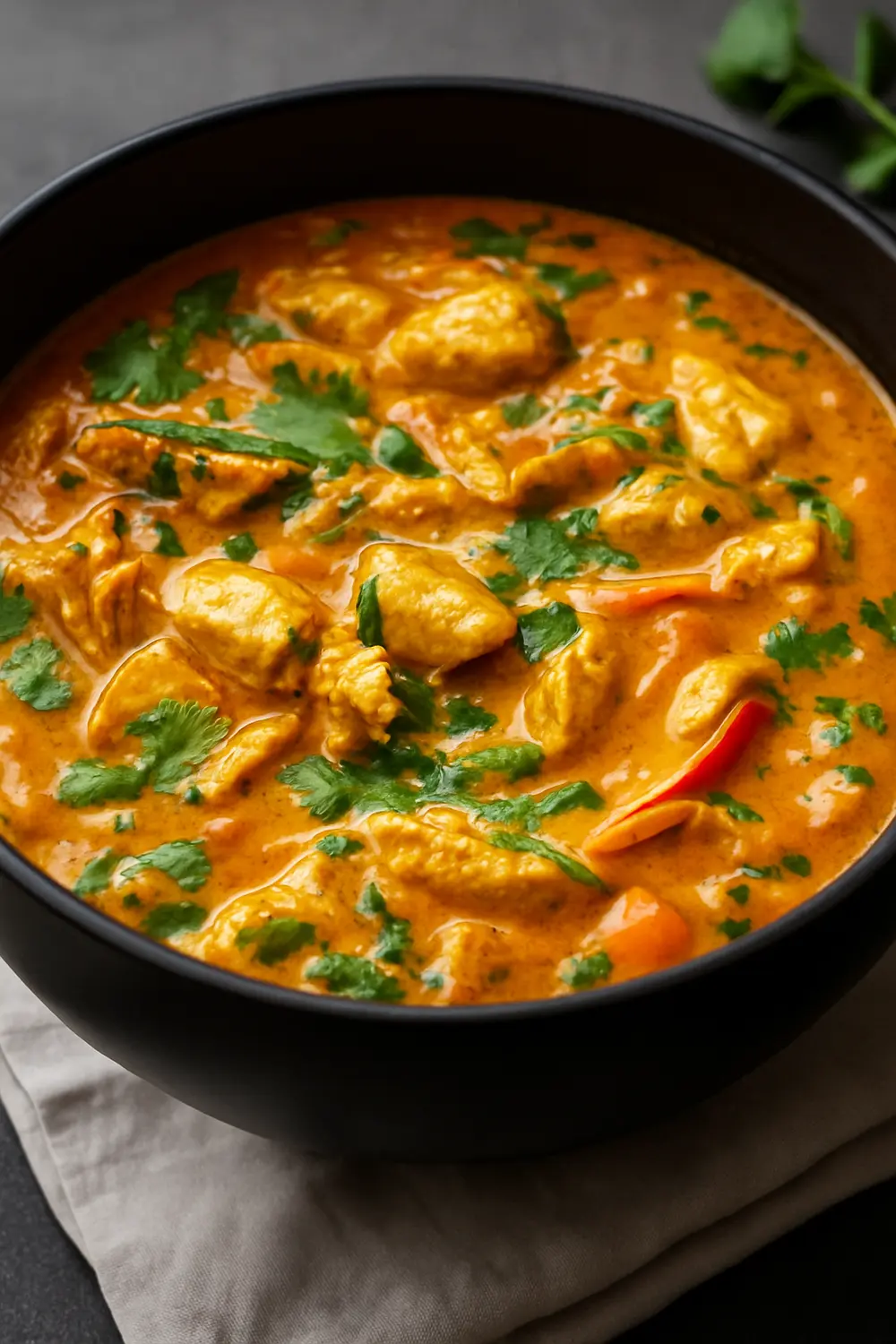
Chef’s Secrets for Making the Best Coconut Chicken Curry
To elevate a coconut chicken curry from merely “good” to truly “unforgettable,” a few insider tips can make a significant difference. These subtle tweaks can enhance the overall dish.
1. Embrace Full-Fat Coconut Milk
- It cannot be stressed enough, always opt for full-fat, unsweetened coconut milk.
- This is the secret to achieving that luscious, velvety texture and rich, authentic coconut flavor that truly defines a creamy coconut curry.
- Lighter versions will inevitably result in a thinner, less satisfying sauce.
2. Don’t Rush the Aromatics & Spices
- This is the stage where the true depth of flavor begins to develop.
- Taking the time to patiently sauté the onions until they are soft and translucent is crucial.
- Equally important is to “bloom” the dry spices in hot oil for a minute or two.
- This process releases their aromatic oils, intensifying their flavor and preventing a raw, powdery taste in the final dish.
3. Gentle Simmering is Key
- Once the coconut milk is added, it is imperative to maintain a gentle simmer, not a rapid, rolling boil.
- High heat can cause the coconut milk to separate or curdle, leading to a grainy or oily texture.
- A slow, steady simmer allows the flavors to meld beautifully and the chicken to become incredibly tender without compromising the sauce’s smooth consistency.
4. Consider Chicken Thighs for Tenderness
- While chicken breast is a viable option, boneless, skinless chicken thighs are far more forgiving and significantly less prone to drying out during the simmering process.
- Their slightly higher fat content also contributes to a richer mouthfeel in the finished curry.
5. Add Fresh Herbs for a Pop
- A generous sprinkle of fresh cilantro at the very end is not merely for aesthetic appeal.
- Its bright, herbaceous notes provide a refreshing contrast to the rich curry, making the complex flavors truly pop and come alive on the palate.
6. Make Ahead for Better Flavor
- Chicken curry, much like many stews and braises, often tastes even better the next day. The flavors have more time to meld and deepen.
- This makes coconut chicken curry an excellent choice for meal prepping.
7. Balance is Everything
- A truly great coconut chicken curry is a symphony of flavors: savory, spicy, sweet, and tangy.
- Do not hesitate to adjust the brown sugar for sweetness, lime juice for acidity, and cayenne pepper or curry paste for heat.
- Tasting as one cooks, and adjusting along the way, is the path to finding the perfect balance for individual preferences.
Final Remarks
This coconut chicken curry recipe effectively bridges culinary traditions, incorporating aromatic Indian dry spices with the creamy, bright characteristics of Thai curries.
The dish’s broad appeal stems from its ability to blend comforting, rich flavors with remarkable ease of preparation, making it an ideal choice for busy weeknights.
Gather your ingredients, follow the simple steps below, and don’t forget to share your delicious results.
Happy cooking!
- Delicious Mediterranean meals
- High-protein weekly meal plan
- 30-day carnivore diet plan
- Healthy prepared meals for seniors
- Healthy high-protein vegetarian meals
- Simple clean eating meals
Quick and Easy Coconut Chicken Curry
This quick and easy coconut chicken curry recipe delivers a rich, creamy, and aromatic experience, blending tender chicken with vibrant spices and luscious coconut milk.
Ingredients
Cooking Instructions
Mise en Place
- Before even thinking about turning on the stove, it is wise to get organized.
- This is what culinary professionals refer to as 'mise en place', everything in its place.
- Dice the onion, mince the garlic and ginger, and cut the chicken thighs into uniform 1-inch cubes.
- This meticulous preparation ensures even cooking and a smooth, efficient cooking process, allowing one to focus on the development of flavors rather than scrambling for ingredients.
Bloom Your Spices
- Place a large skillet or Dutch oven over medium-high heat.
- Add 1-2 tablespoons of olive oil (or ghee for extra richness, as some culinary experts suggest for a deeper flavor profile ).
- Once the oil shimmers, add the diced onion and a pinch of salt.
- Sauté, stirring occasionally, for about 5-7 minutes until the onion is beautifully translucent and just starting to brown at the edges.
- This initial stage is crucial for building the foundational flavor of the curry, allowing the natural sweetness of the onions to develop.
- Next, stir in the minced garlic and grated ginger.
- Cook for just 1 minute until fragrant.
- Care must be taken not to let it burn, as burned garlic and ginger can impart a bitter taste.
- Immediately follow with the dry spices: curry powder, turmeric, cumin, coriander, and paprika.
- Stir constantly for about 1-2 minutes.
- A noticeable change will occur as the spices become incredibly fragrant and slightly darker.
- This is the "blooming" or "toasting" stage, where the heat releases their essential oils, intensifying their flavor dramatically.
- This is a non-negotiable step for a truly flavorful curry, as it prevents a raw, powdery taste in the final dish and unlocks the full aromatic potential of each spice.
Build the Base
- Add the tomato paste (or crushed tomatoes) to the pan.
- Stir it into the spice-onion mixture and cook for another 2-3 minutes, allowing it to deepen in color and lose its raw edge.
- This step adds a crucial layer of tang and richness to the sauce.
- Next, add the cubed chicken thighs to the pan.
- Toss them well to coat them in that incredible aromatic spice paste.
- For this quick curry, the aim is maximum flavor absorption.
- While some chicken curry recipes suggest browning chicken first to develop a crust, adding it directly to the sauce allows it to poach gently and soak up all the flavors, making it incredibly tender.
- Cook for about 3-5 minutes, stirring, until the chicken is no longer pink on the outside.
Build the Sauce
- Pour in the full can of unsweetened full-fat coconut milk.
- Stir everything gently to combine, ensuring the chicken is submerged in the luscious sauce.
- Add the brown sugar and a good pinch of salt and black pepper.
Simmer Gently
- Bring the mixture to a gentle simmer over medium heat.
- Once it starts to bubble, reduce the heat to medium-low.
- Cover the pan partially (or fully if a thinner sauce is preferred) and let it simmer for 15-20 minutes, or until the chicken is cooked through and fork-tender, and the sauce has thickened to the desired consistency.
- Stir occasionally to prevent sticking.
- A gentle simmer is key to maintaining the creamy texture of the coconut milk and preventing it from curdling.
- If using optional vegetables like bell peppers, add them about 10 minutes into the simmer to ensure they cook through but retain some texture.
- If using quick-cooking greens like spinach or frozen peas, add them in the last 5 minutes of simmering, allowing them just enough time to wilt or heat through without becoming overcooked.
Finish & Season
- Remove the pan from the heat.
- Stir in the fresh lime juice.
- This step is critical, as the acidity adds a crucial bright, tangy note that cuts through the richness of the coconut milk and awakens all the flavors, providing a refreshing contrast.
- Finally, stir in the garam masala (if using) and a generous handful of fresh chopped cilantro.
- Give the coconut chicken curry one last taste and adjust salt or any other seasoning as needed.
Serve
- Ladle your coconut chicken curry over fluffy basmati or jasmine rice, or serve with warm naan bread for scooping up every last drop of that incredible sauce.
- Garnish with extra cilantro and lime wedges.
Nutrition Facts
Servings 4
Serving Size Approximately 1 cup (240g)
- Amount Per Serving
- Calories 380kcal
- % Daily Value *
- Total Fat 28g44%
- Saturated Fat 18g90%
- Cholesterol 60mg20%
- Sodium 480mg20%
- Potassium 550mg16%
- Total Carbohydrate 15g5%
- Dietary Fiber 2g8%
- Sugars 4g
- Protein 28g57%
- Vitamin A 600 IU
- Vitamin C 10 mg
- Calcium 40 mg
- Iron 2 mg
* Percent Daily Values are based on a 2,000 calorie diet. Your daily value may be higher or lower depending on your calorie needs.
Note
- Blooming Spices: Do not skip the step of cooking the dry spices in oil for 1-2 minutes after the aromatics. This crucial process releases their full flavor and aroma, preventing a raw, powdery taste in the final dish.
- Gentle Simmering: Once the coconut milk is added, maintain a gentle simmer, avoiding a rapid boil. High heat can cause the coconut milk to separate or curdle, leading to an undesirable texture.
- Chicken Tenderness: If using chicken breast, be mindful not to overcook it, as it can dry out quickly. Chicken thighs are more forgiving and will remain juicy.
- Taste and Adjust: Seasoning is dynamic. Taste the curry before serving and adjust salt, sweetness (brown sugar), or acidity (lime juice) as needed. Different brands of curry powder or coconut milk can vary in saltiness and sweetness.
- Fresh Finishers: The fresh lime juice and cilantro added at the end are not just garnishes; they provide a vital burst of freshness and acidity that brightens the entire dish and balances the richness.

